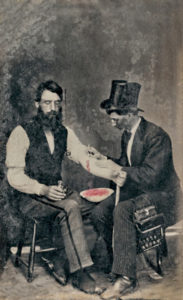The superintendents at most asylums had the best of intentions when it came to patient care. They understood (for that era) what kind of help patients needed and what kind of attendants could best provide it. Most asylums had rules of conduct for staff and lists of optimal behaviors they expected to see in them; if these desires had been met, most asylums would have been better places. However, superintendents were at the mercy of legislatures, which often underfunded public asylums. Except for the wealthiest private institutions, attendant staffing was never high enough to provide good–or sometimes even adequate–care.
Staffing issues were especially tough during WWI, when many doctors and nurses left private employment for military service. In 1918 the superintendent of Tennessee’s Central Hospital wrote about the problem he (and all asylums had) in attracting good workers: “We have from forty to sixty beds soiled each night, and the patients who soil the beds at night soil themselves often during the day and have to be dressed and attended to…and the great State of Tennessee says to our attendants, ‘We will allow you from twenty to thirty-five dollars a month for this.'”
This was not much money for what was typically a 14-hour workday full of exhausting physical (and sometimes dangerous) labor. Workers in manufacturing earned around $48 weekly in 1914, unionized bricklayers in New York earned nearly $31 a week in 1913, and even notoriously underpaid female mill workers earned between $5 and $7 a week. The typical asylum attendant’s poor pay almost guaranteed that good workers would go elsewhere. Asylums were often left with attendants who for one reason or another could find work nowhere else.





























